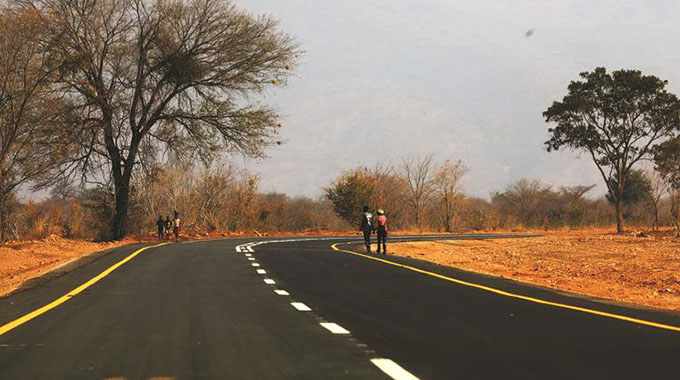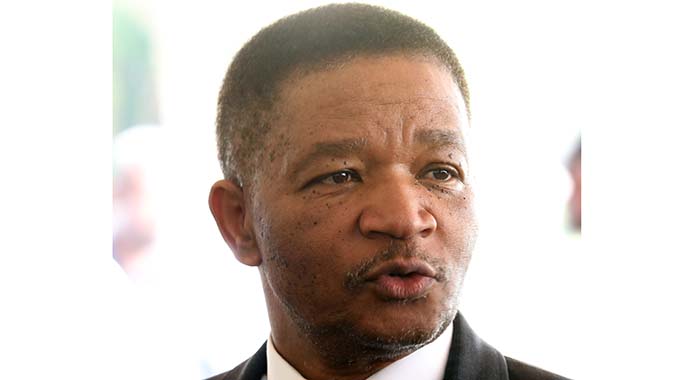Kanyemba: Zim’s future commerce, trade route

Isdore Guvamombe
In Mbire, geography and history condemned the land into inhabitability that requires resilience for human beings to survive.
Unbearable heat, poor and unreliable rainfall patterns, malaria, tsetse fly, lack of infrastructure, free-roaming wildlife; all brought a pommel of problems to the few people who live there.
Before Independence in 980, Mbire was largely inhabitable, but today, the Government has sanctioned the construction of a town at the northern-most point of Mbire at Kanyemba, having eradicated tsetse fly, largely contained malaria and invested heavily in road infrastructure.
“We are more than overwhelmed by the response. It all started as an idea when we had our business investment conference in 2017, that’s when everything started moving.
“The take up for stands, residential and industrial is amazing. The interest by both local and foreign investors is serious.
“This year alone, we have received more than 10 investment delegations from Belarus to China among others and our investment profile is growing by the day,’’ said Phineas Mushoriwa, the Mbire District Council development consultant.
Originally, Kanyemba was mainly occupied by a very small population of the nomadic Doma and Chikunda people, and it is here that a new town is being built, undoubtedly to become a game changer in industry, commerce and international trade.
For more than three decades, the only known business in Kanyemba were the commercial hunting concessions in Dande North Safari area that encompassed Usanga Usanga, Masawu and Mupedzapasi and a few fishing camps dotted along the Zambezi River.
Mupedzapasi in particular is known for its uranium deposits that have interested many countries, while Luangwa on the other side of the Zambezi River also has its own share of uranium deposits.
Zumbo on the Mozambican side is yet to confirm uranium deposits, but given its proximity to Mupedzapasi, it is almost certain that the uranium deposits are there too.
All along, Kanyemba was also known as a crossing point into Zambia, using home-made canoes. But, today, Kanyemba is being built out of nothing but a realisation that it is a strategic point that could change the region, the continent and indeed the world.
Here, the mighty Zambezi River meets with Luangwa River, making water a worthy benevolent mistress. Again, here, three countries: Zimbabwe, Zambia and Mozambique meet in a wrap of land abundant with water, wildlife, salt and uranium deposits.
Fishing, commercial hunting of wildlife and tourism abound. Situated almost halfway between Kariba and Cabora Basa dams, just off the north-gate of Mana Pools, Kanyemba has been famed for canoeing and river-bank camping, the most famous being the Seven Days and Seven Nights on the Zambezi from either side. When operational, Kanyemba Town becomes a link with Zumbo Town in Mozambique, Luangwa Town in Zambia and the trio will open up a corridor of commerce and trade in a route that is the shortest from Harare to Lusaka. Already. Government has accorded the Kanyemba Town project a National Project Status, opening it to Government fiscal support and multi-lateral and financial bankability. Today, Infrastructure Development Bank of Zimbabwe (IDBZ) has moved in to spearhead infrastructure development in situ. It has acquired its own land along the Zambezi River. So serious has become the competition for land in Kanyemba that it has attracted big names like tennis icon Byron Black, who is among the people now owning land there.
A police station perched on the bank of Zambezi River, an Immigration office a spitting distance away and several supporting Government departments have started the ball rolling for a purely run town.
Mbire Rural District Council is now overwhelmed by the demands and is turning to Government for more support. The Government has also responded, riding on the National Project Status and started tarring the 150km road between Mahuwe and Kanyemba, to make it an all-weather road for free movement of people and building material.
The road from Harare to Kanyemba in Mbire stretches due north, slowly burying behind it vast swathes of farmland, dotted bucolic settlements and a few mountains, then the town of Mvurwi, past the Great Dyke Range, then breaks into communal lands in Guruve. Past Guruve, the road starts snaking up and down, following the dictates of geomorphology until it drops into Mbire — that floodplain of the Zambezi River.
“We are also grateful that the Government has managed to start work on tarring the road to Kanyemba. The Government is moving at amazing speed, as we can all see,’’ says Mr Mushoriwa.
Mbire District used to be part of Guruve District until 1999 when the Government wined off Mbire. Since then, the council has had to find ways of developing the area once rejected by everyone because of its tsetse flies.










Comments